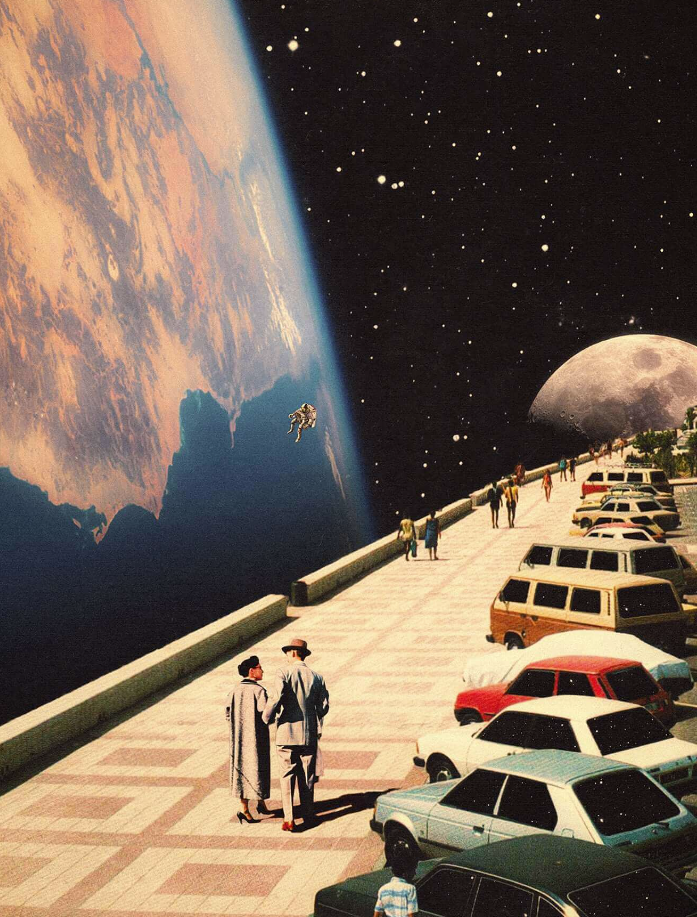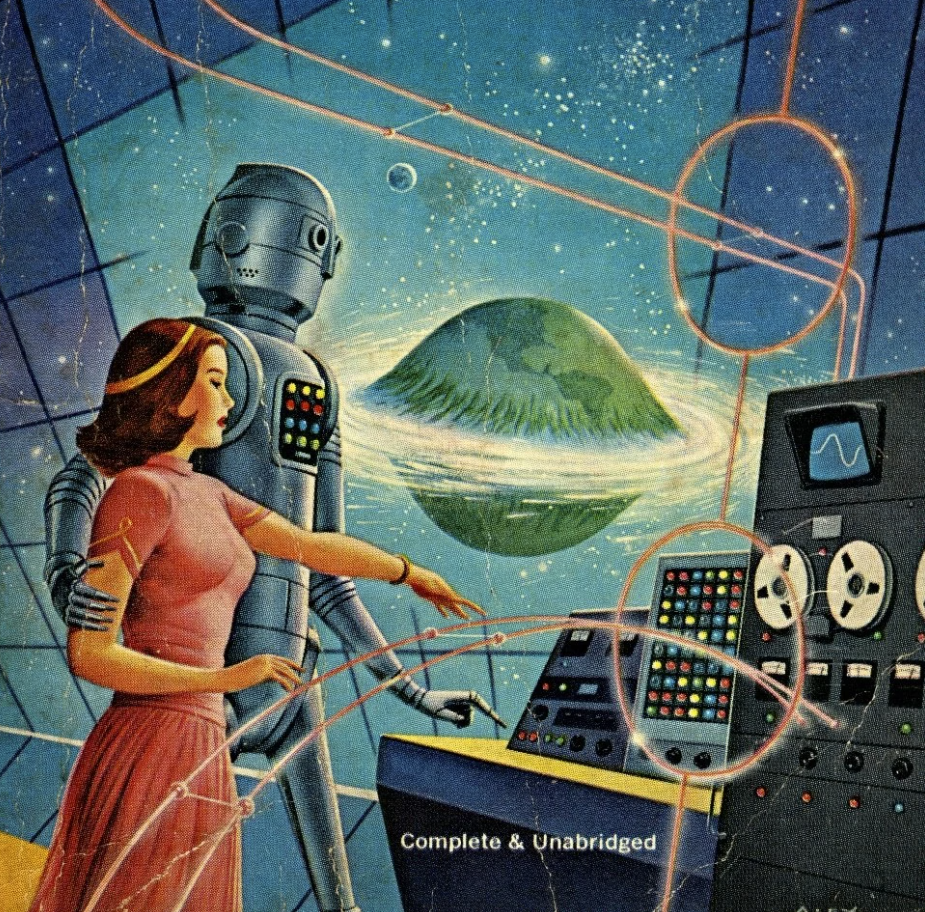
Retrofuturism emerged in the 1960s and 70s as the new age of technology and science was influencing people’s imagination about the future. Retrofuturism is the future as seen from the past. It is retro now because the art was created throughout the 20th century. Artists, writers, and filmmakers created images and designs portraying a futuristic, space-age future. These images were primarily depicting future utopian worlds. The aesthetic includes retro futuristic design elements, such as sleek lines, geometric shapes, and optimistic engineering designs. The aesthetic also includes space age imagery such as rockets, astronauts, and extraterrestrial colonies, while including popular mid-century colors, such as pastels, bold primaries, and metallic tones. This space imagery imagined from the lens of technology in the 1960s and 70s, so there is often a disconnect between the technology they envisioned, and the technology that was later invented.

Space retrofuturism took shape in the 1970s, the years that saw the final five flights of the Apollo Program. The art and aesthetic of retrofuturism emerged from the idea that applied science would improve the daily lives of humans through technological advancements. This idea of technology improving society was hard to realize in the midst of the Vietnam War, environmental degradation, and the energy crisis. However, the futuristic optimists prevailed and produced futuristic media that depicts humanity as a space bearing and multi planet civilization.

The characteristics of space retrofuturism look retro to the present day viewer, yet were futuristic for people living through the new space age. The aesthetic is interesting because it includes images that attempt to depict our current state of space technology, however accurate it may be. This aesthetic is also interesting because during our present we also like to predict what the future of space travel will look like with artwork and renderings. These renderings might be viewed as space retrofuturism in future years, just as we view the space retrofuturism from the 60s and 70s.

Many images of space retrofuturism dive into the concept of retro space tourism. These types of images showcase a vision where space travel is not exploration, but a part of everyday life. These images are interesting because many of them simply take the current technology from that time, and place it in space, often ignoring the practicality and disregarding physics laws that the technology defies.

Space retrofuturism heavily influenced pop culture throughout the 1960s and 1970s. The most notable piece of pop culture influenced by retrofuturism was George Lucas’ Star Wars. The series of movies took the current technology from when the movies were filmed and simply put it in space. Although computers at the time were extremely rudimentary, they depict similar looking computers on the death star to make them seem for futuristic and advanced. Watching more current Star Wars movies, you can see how the updated knowledge of technology has influenced the look of the sets and gadgets used in filming.

In conclusion, space retrofuturism is a nostalgic and imaginative aesthetic that combines the retro feel of the 1960s and 70s with the aspiration for space travel. It’s influence on pop culture will have humans envisioning our future in space for years to come.
Sources
https://artincontext.org/retrofuturism/
Pictures
[1] https://taudalpoi.com/products/space-promenade [2] https://aesthetics.fandom.com/wiki/Retro-Futurism [3] https://www.reddit.com/r/spaceflight/comments/z7qkno/retro_futuristic_space_station_project/ [4] https://www.pinterest.com/pin/retrofuturism-101-definitions-aesthetics-and-fashion-examples–886927720337389952/ [5] https://www.abposters.com/marketplace/galaxy-beach-retro-futuristic-collage-space-art-v90699 [6] https://starwars.fandom.com/wiki/Bridge_(starship)
4 Comments. Leave new
I have always enjoyed this kind of aestetic and I think you did a great job with it! Your historical context was very clear and in depth, especially in it’s emergence in the 1960s and 70s. I was wondering if there is anything today that pulls from this aestetic? Big pop culture things such as Star Wars have obviously continued and kept the aestetic over the years but is there something new that we are seeing also pull from the aestetic?
Hi Cannon, thank you for your comment and for reading my post. I agree this aesthetic has been remembered over the years. Some more recent forms of media that pull from the space futurism aesthetic are the Star Trek remake in 2009 and the Mandalorian television series. Also, looking for pictures for my post, I found a number of art pieces and posters for sale depicting this aesthetic, so there is clearly a current popular demand for displaying this aesthetic as art. I hope this answers your question.
This aesthetic is fascinating, and you have done an amazing job outlining its history! I really like how you explain its coexisting futuristic and retro qualities. This seems like a confusing and very niche aspect of an aesthetic, but you explained it beautifully in the paragraph following the third image. I think that this paragraph would have been helpful to include first, because it was especially clear when defining the overall elements of outer space retrofuturism. You also did a great job highlighting how real-world technology influenced this aesthetic, while it then went on to influence pop culture, art, and film. This aesthetic was fun to learn about, and I loved the images!
Hi Sarah, thanks for reading my post. I agree that this aesthetic is very niche. It was difficult to find specific pictures and examples of the aesthetic. I agree that the third paragraph is helpful to have at the start, so I have added those characteristics of the aesthetic to first paragraph to define the aesthetic earlier in the post. Thanks again for reading and your feedback.